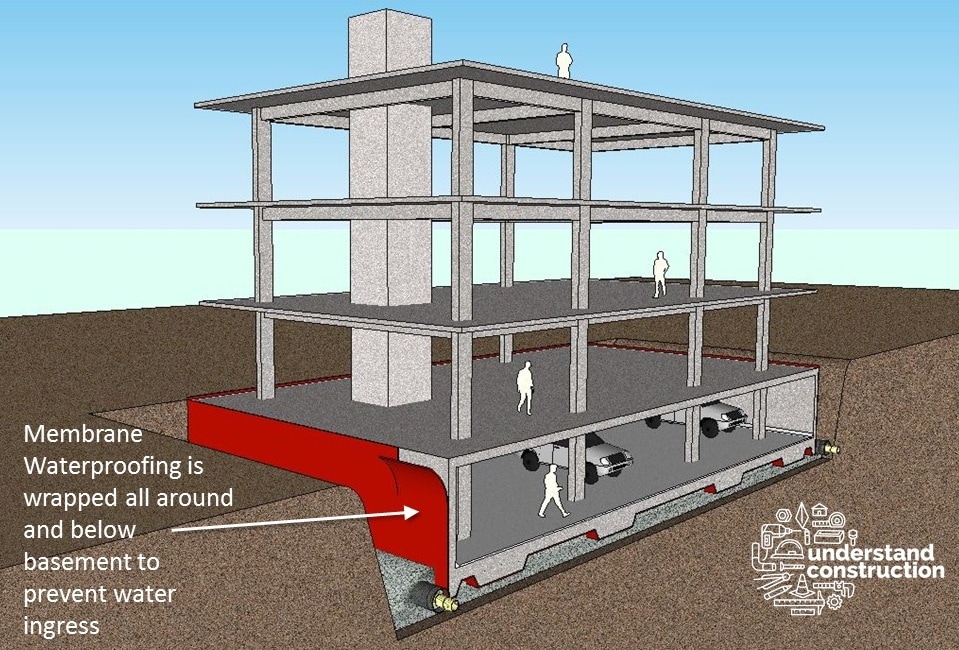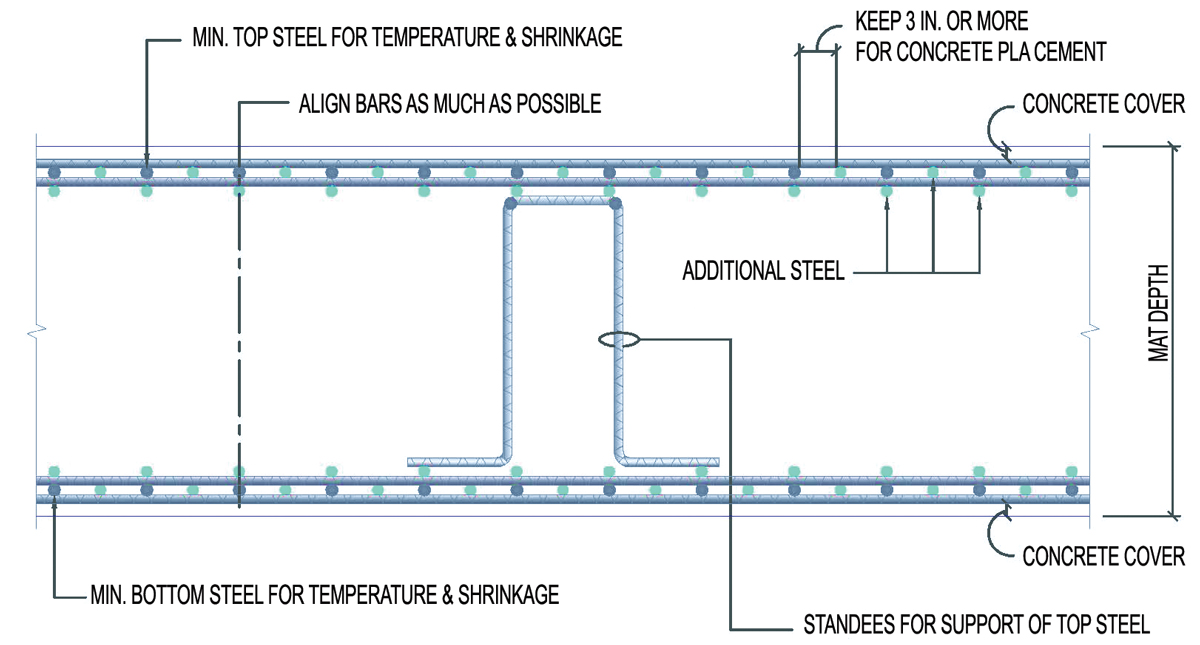However the mat thickness was typically not greater than about 0 01 times the radius of curvature with some local increases acceptable around columns and walls.
Typical mat foundation thickness.
Depending on the total load applied to the mat and underlying foundation system the thickness of mat foundations can vary from 1 ft 0 3 m to more than 20 ft 7 m.
The typical thickness of a foundation wall by christina piper the foundation wall has to be as thick as the wall it supports.
In the cellular mat foundation the structures of boxes are formed and walls of every box act as beams.
The reinforcing system in the mat can be quite substantial with heavy reinforcing bar mats in the bottom top or both locations within the mat depth.
It is also termed as a box mat foundation.
This type of foundation is suitable for loose soil.
It is common to use mat foundation or deep basements to transfer the column loads to the underlying soil as well as provide floor slab for the basement.
Raft foundation is actually a thick concrete slab resting on a large area of soil reinforced with steel supporting columns or walls and transfer loads from the structure to the soil.
Seismic activity and other severe environmental conditions may also have to be addressed.
The average concrete foundation costs 5 100 to 15 400 or between 6 83 and 10 32 per square foot for both materials and installation.
A foundation footing and wall need to support the weight of the house and resist lateral pressures from normal backfill conditions.
Your final cost will depend on the size and thickness of the slab and if you add any special reinforcement such as wire mesh or rebar.
Dishing refers to the deflected shape of the mat foundation.
Usually mat foundation is spread over the entire area of the structure it is supporting.
How to construct a raft or mat foundation a raft foundation is constructed by first excavating the ground to a uniform flat level.
The walls are connected by slabs at the top and bottom.









